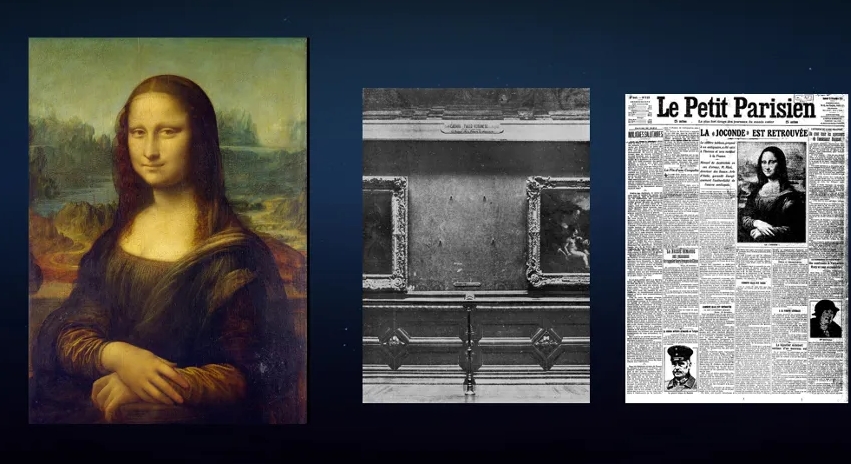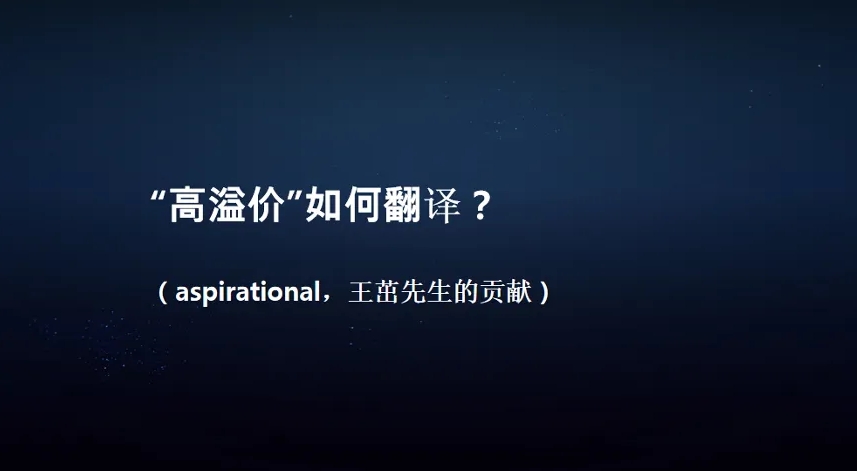Wang Sai:Scarcity and High-Premium Branding Strategy
As an educator in a business school, I also spent half of my time as a business consultant. With this dual perspective, I would like to take this opportunity to share with my insights. Many are familiar with my book, “增长五线,” where I delve into researching growth strategies. I apply the principles outlined in this book when viewing brands and their strategies.

In the past 10 years, many high premium brands in China are gradually getting ahead with increasing growth. I brought up an important topic: Scarcity Strategy and High-Premium Branding Strategy.
When it comes to branding in China, it is undeniable that it plays a pivotal role in business growth. Today, our focus is on scarcity brands and high premium brands, both of which are products of China’s entry into the age of involution.
During my trips to Japan this year, I was struck by something remarkable: Japanese toilet bowls feature 47 buttons. This intriguing design led me to ponder the complexity of the Japanese mindset. 《平城时代 The Nara Period》 is a tale depicts Japan’s ranking as second in the world in terms of GDP per capita during that era. However, everyone knows that Japan currently ranks 25th globally, having surpassed by many, including Korea.
1 – Three Stories of Scarcity
In the process of China’s business growth, we need to analyze if we should follow the “Japanese mindset” or the “American mindset”. However, I suggest a new mindset called the “French mindset”.
French and Europeans are the master players of high-premium brands, behind this there’ll also be a term – Scarcity. I’ll start by sharing 3 stories of scarcity, none of which are business-related, but all are scarce items.

When visiting the Louvre in France, one encounters two of the museum’s most cherished treasures: the Statue of Victory and the Venus de Milo. What makes these two artworks so invaluable is their imperfection. Artists of the highest caliber draw inspiration from these imperfections, aspiring to restore and recreate these masterpieces.
Another renowned work is the Mona Lisa. Personally, I have a great fondness for art, particularly the works of Da Vinci in France and Italy. Among his many popular pieces is the Virgin Mary. What makes this artwork unique is that it's the only piece in the museum protected by a glass mask for preservation. But what exactly makes these artworks so incredibly treasured?
Legend has it that in year 1911, this artwork was stolen, prompting a widespread search by the French government and police. Speculations arose about the identity of the thief, with some even suspecting Picasso and financier J.P. Morgan. A year later, the artwork was miraculously returned to its original place. This incident bestowed upon it immense value and prestige, with a profound and captivating story attached. To attain the pinnacle of success, one must possess boundless imagination, a crucial element in the "French mindset," imagination at work.

Once again, it's worth emphasizing that in high-premium products, brand imagination is a crucial factor, perhaps even the most important one.
2 – The Best Definition of a “Premium Brand”
After discussing the 3 core key elements, we need to examine the characteristics that define a “Premium Brand”.

A friend of ours, Mr. Wang Zhuo, translates it as aspirational. “Aspirational” embodies the inspiration of desires and dreams, aiming for social prestige and material success. In France, it represents the pinnacle of value for luxury or high-priced products.
Let’s discuss an important key factor behind this meaning. The supply of scarcity is a very important topic. Scarcity is categorised into the following types:
· Supply-side
· Limited edition
· Limited time
· Demand type
First, what are the barriers to it? Secondly, is it scarce? Do you have scarce resources? Competitive advantage and pricing power. These concepts are integral in China’s strategic vocabulary and intricately intertwined, which I will not delve into them further here.
De Beers, the diamond brand, exemplifies how controlling market supply and mobilizing demand are essential strategies. Scarcity plays a vital role here. In the realm of high-end luxury and premium brands, scarcity stands out as a critical key element due to its significance influence on human nature.
Why is scarcity in the genes of human nature? Due to psychological factors, people inherently value their ability to choose and resist having it restricted. The more resilient individuals are, the stronger their desire for freedom and autonomy. Scarcity taps into this desire by mobilizing people’s yearn for freedom to choose, which lies at the core of its effectiveness in the strategies of high-end luxury and premium brands.
3 – Scarcity = Structural Scarcity + Psychological Scarcity
When it comes to scarcity, I can give a formula:
Scarcity = Structural Scarcity + Psychological Scarcity
For example, Mr. Yao shared about the core competences, and those derived from resources. However, these are far from sufficient.
In the psychology of scarcity, what is the core of decision-making?
Strategic Decisions to Entrepreneurial Scarcity:
1. How to enhance your premium power through scarcity (Aman Hotels)
2. The formation of a refractive brand portfolio to prevent Rolls-Royce syndrome (BYD)
3. Trade-off between Turnover and profitability (Maotai)
4. Tactical composition of the business with digital means of premium and turnover (Meituan)
When examining these four strategic decisions, it's noteworthy to recall Steve Jobs' emphasis on leveraging scarcity to elevate brand premium. As Mr. Yao pointed out, positioning brand characteristics marks only the initial stage. It's no longer sufficient to merely create luxury or high-priced brands. Steve Jobs believed that channel media alone couldn't define a brand; they only serve as accelerators. The true essence of a brand lies in its underlying content, representing its soul and transcending mere positioning.
Brands encompass various dimensions, including visual identity, purchase drivers, category status, emotional significance, and resonance of humanistic values. Among these, humanistic value resonance stands at the pinnacle.
Currently, China doesn't have top-tier brands; instead, it boasts high-end brands that operate at the third and fourth levels, indicating they have yet to reach their full potential.
The second scarcity decision is to prevent the “Rolls-Royce syndrome”. For example, BYD introduced a premium luxury brand line called “Yangwang” to avoid restricting its market like Rolls Royce did. Unlike Rolls-Royce, which only exclusively targeted the premium market, thereby limiting its market size and leading to its eventual sale to BMW. This approach entails building a brand portfolio to mitigate such risks.
In the third trade-off between profitability and turnover, the focus is on finding ways to make more money while selling more products. One effective strategy is to raise the prices of lower-priced items, which can lead to increased sales without needing to sell more products overall.
The last aspect is tactical promotion.
4 – How Golf Clubs Can Grow Through Scarcity
After discussing the principles, allow me to share a story about my involvement in implementing a scarcity strategy. The most important aspect of such a strategy is having a clear vision for scarcity. What does this mean? We all understand the value of exclusivity in today's China, particularly how luxury goods can command a premium.
As a consultant for a golf club, I inquired about the company's growth strategy and I thought of 2 ways for the company to grow; one is to sell out memberships fast, the second is to sell them at a good price to attract higher quality customers.
I share the following three elements:
1. Be scarce enough.
2. Be desirable.
3. Availability constraints (don't show up everywhere, that's Moutai's mistake of co-branding everywhere).

Aligning Jean-Noel Kapferer’s model of the three elements with the growth strategy offers a fresh perspective. Transitioning from scarcity to availability, essentially, constitutes your growth algorithm. Determining the number of core customers required doesn't necessarily entail a large quantity; it can be calculated precisely.
The second element pertains to availability and desire, which involves mobilizing people to afford purchases rather than impulsive buying. This concept is known as the pricing model.
The final element, brand gravity, encapsulates the essence of these three elements, transcending mere branding or strategy discussions.
Looking back at the golf course case, what is scarce? The venue itself is not a scarce resource, but rather the culture surrounding it is. If we want to turn a brand into a high-premium brand today, the scarcity of venue resources is insignificant compared to the important element of mobilizing customers’ unlimited desire. This is what constitutes the cultural elements of the brand.
Golf is a western sport, but to play it abroad, I changed its name to something that entails a deeper meaning. Its name was adapted to convey deeper meaning, drawing inspiration from essential elements and core values of Chinese Taoism and Confucianism. This incorporation of Chinese culture added significant depth and resonance to the sport.
Questions for Building Brand Soul:
· Firstly, what is the core?
· Secondly, what category?
· Thirdly, what spirit?
· Fourthly, what personality?
These core elements constitute the essence of the brand, encompassing both tangible attributes and intangible qualities that extend beyond mere features to form the brand's soul.
Certainly, there are numerous approaches to achieve this objective. However, the focus of this article is on the importance of the brand's core. It's not merely about discussing the brand; rather, it involves aligning the brand strategy with its core identity and ensuring effective implementation.
Lastly, I want to summarize with these 3 sentences:
1. High-end brands, premium brands, luxury brands — they're not just luxurious; they're aspirational, inspiring the heart and dreams. This perspective is underscored by Mr. Wang Zhuo.
2. The revitalization of Jean-Noel Kapferer’s model of strategies for high-premium brands focuses on growth.
3. The resonance of culture and values, rather than foolishly self-proclaiming to be a “leading leader”, is the highest level of branding, and to truly create a high-premium brand.
Of course, thank you to the organizers for providing this platform to share. It’s been a while since I last delved into the topic of branding, which happens to be one of my strengths. Lastly, I want to emphasize the scarcity of real talent, as it remains one of the most precious resources. Thank you all.




